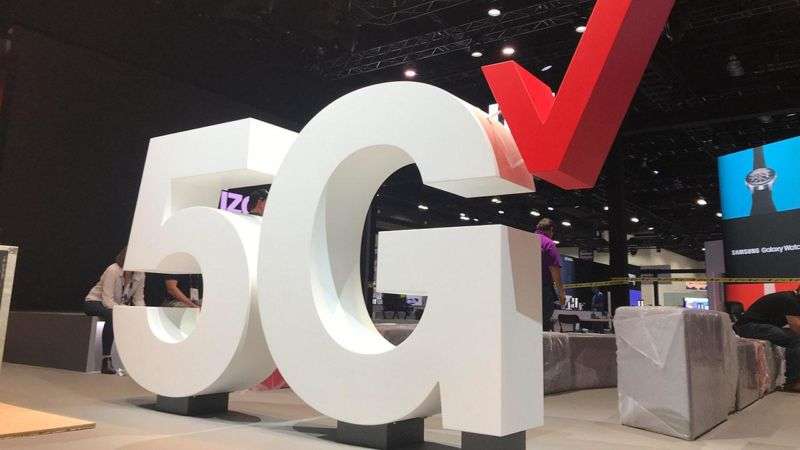
Millimeter-wave 5G isn’t for widespread coverage, Verizon admits

Verizon’s early rollout of millimeter-wave 5G is producing high speeds and throughput, but the high-frequency spectrum isn’t suitable for widespread coverage, Verizon CEO Hans Vestberg said today.
One day after T-Mobile CTO Neville Ray wrote that millimeter-wave spectrum “will never materially scale beyond small pockets of 5G hotspots in dense urban environments,” wireless industry analyst Craig Moffett asked Vestberg about Ray’s statement during a Verizon earnings call.
Vestberg responded that millimeter-wave spectrum “has lived up to our expectation on performance” and will get better as Verizon improves the software for managing the spectrum. But he added a significant caveat.
“We will need to remind ourselves, this is not a coverage spectrum,” Vestberg said.
Verizon will use millimeter waves “as far as [they’re] economically sustainable, of course,” Vestberg continued. “But still, it’s very good ranges we can come up with and, of course, the throughput and speeds are enormous.”
Later in the earnings call, analyst Walter Piecyk pressed Vestberg on his millimeter-wave statement, saying it seemed like a change from Verizon’s optimism about the frequency ranges.
In September 2018, Verizon said that “millimeter-wave spectrum is the cornerstone in enabling our 5G Ultra Wideband network” and that this spectrum is like “a superhighway that’s capable of moving massive amounts of traffic, at super-high speeds, on thousands of lanes lined up side by side.”
“Hans, you mentioned that millimeter wave is not your coverage spectrum,” Piecyk said to Vestberg during today’s earnings call. “I think that’s a little different than what you guys talked about before.”
“I don’t think we’ve changed anything about what we thought about millimeter wave, how we’re going to deploy that—and we’re deploying massively at the moment,” Vestberg responded. He further said that “the majority of all the traffic is in dense urban areas, where we now initially are focusing.”
Vestberg also said that Verizon 5G will be boosted by the rollout of dynamic spectrum sharing technology next year, but that will be used on all mobile frequencies from low bands to high bands.
Separately today, Moffett told CNBC that he thinks there is “zero chance” 5G becomes a ubiquitous technology by 2021.
5G’s top speeds not for rural areas
Taken together, the T-Mobile and Verizon statements this week indicate that 5G’s fastest speeds won’t come to rural America and will be limited to certain areas even within big cities.
5G networks will use both low and high frequencies, but they’re expected to offer their highest speeds on millimeter waves. These high frequencies generally haven’t been used in cellular networks because they don’t travel far and are easily blocked by walls and other obstacles.
T-Mobile and Verizon both have high-frequency spectrum licenses in the 28GHz and 39GHz ranges, which they can use for high speeds in densely populated urban areas. Both carriers used sub-1GHz spectrum to provide nationwide coverage with 4G, and they can use that same low-band spectrum with 5G.
For 5G in rural areas, then, the carriers seem likely to focus on making better use of lower-frequency spectrum instead of deploying millimeter-wave networks to any significant extent.
T-Mobile says it will launch 5G coverage in 30 cities during the second half of 2019. This is later than originally planned, and the reason is a lack of 5G-enabled phones. The delay is due to “the lack of phones that can tap into the critical low-band 600MHz spectrum that will power much of [T-Mobile’s] early 5G coverage,” CNET wrote in February, based on an interview with Ray.
“Ray had pushed the industry to move faster with compatible devices but noted much of the industry was working on devices that supported bands with higher frequencies, which offer better speeds, but less range,” the CNET article said.
Verizon launched 5G on the 28GHz band in parts of Chicago and Minneapolis this month, but it’s only usable on one Motorola phone. Reviewers found that finding a signal is difficult even within Verizon’s narrow launch areas.
Ray made his comments about millimeter-wave spectrum yesterday as part of a blog post criticizing AT&T and Verizon for hyping small 5G rollouts that are “meaningless for consumers.” Ray noted that millimeter-wave spectrum “has great potential in terms of speed and capacity, but it doesn’t travel far from the cell site and doesn’t penetrate materials at all.”
Despite these limits, Republicans in the federal government have used the 4G-to-5G upgrade to justify regulatory rollbacks. The Federal Communications Commission in September voted to prevent city and town governments from charging wireless carriers about $2 billion worth of fees related to deployment of wireless equipment such as small cells. The FCC claimed this will cause carriers to build 5G networks in rural and sparsely populated areas where it would otherwise be financially unfeasible. But the FCC imposed no requirements on carriers to deploy any more broadband than they otherwise would have.
In Congress, Republicans tried to exempt all 5G wireless services from a bill that would restore net neutrality rules. They argued that net neutrality would limit the full potential of 5G.




